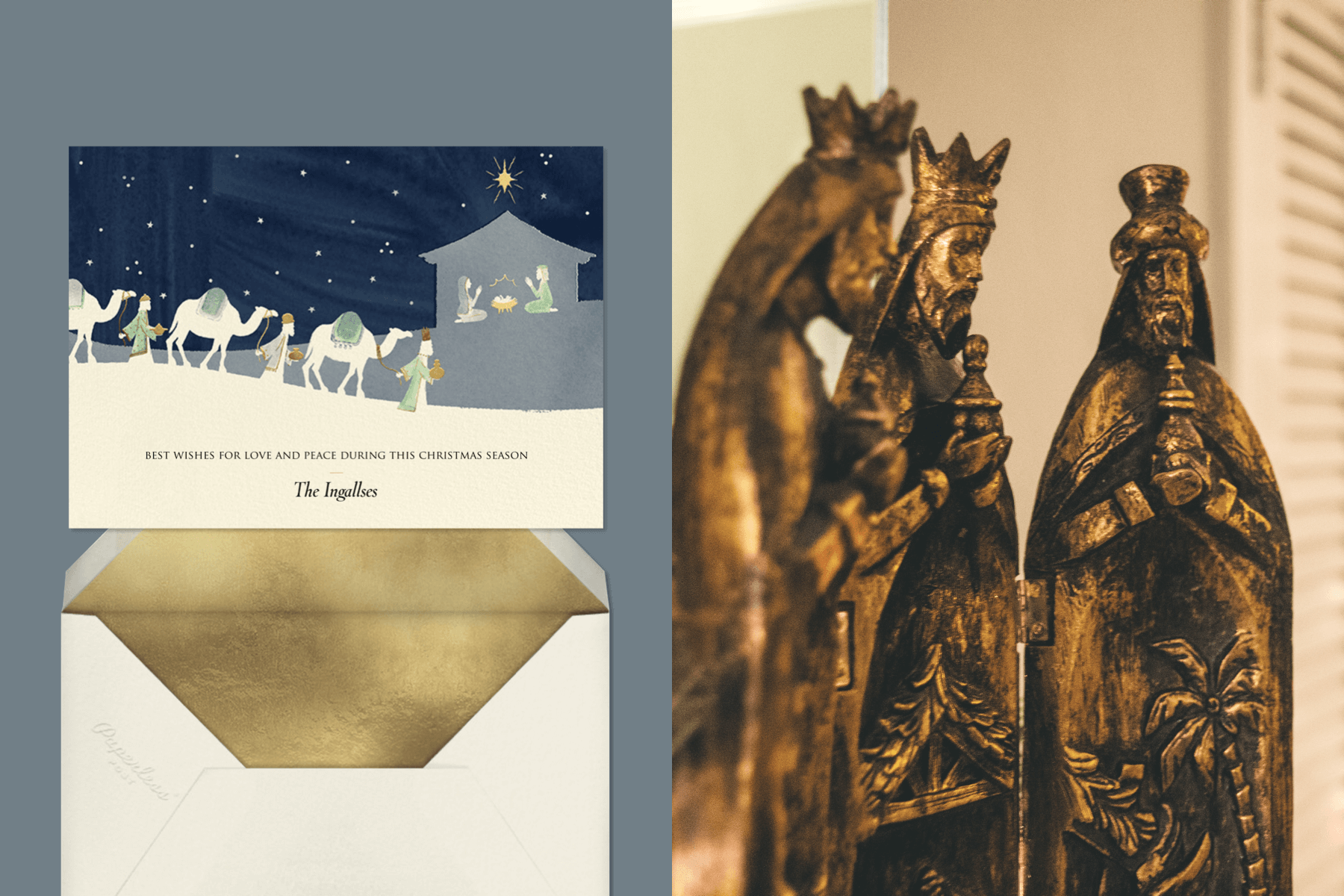Blog
What is Dia de Los Reyes? Party inspiration fit for a king
For many people around the world, the holiday activities and celebrations don’t end when the ball drops at midnight on New Year’s Eve. Día de Los Reyes, also known as Three Kings’ Day or the Feast of the Epiphany, is a holiday rooted in Christianity and occurs each year on the 6th of January. It’s a day of food, festivities, and gift-giving. In fact, many families—especially in Latin America and Spain—exchange gifts on Día de Los Reyes instead of Christmas Day.
To learn more about its history, common traditions, and how to host a beautifully curated and decidedly regal Día de Los Reyes party, read on.
“Three Kings” by Paperless Post.
What is Dia de Los Reyes?
Many Christians (and non-Christians, alike) are familiar with the biblical tale of the birth of Jesus. It starts with the Immaculate Conception of the Virgin Mary and culminates in a manger in Bethlehem, a small town outside of Jerusalem. According to the story, this newborn Messiah was welcomed into the world by a number of overjoyed citizens, particularly the Three Wise Men or Magi. Guided by a bright star, these three wise men came from across the land to deliver gifts of gold, frankincense, and myrrh to the baby. It is from this tale that Día de Los Reyes (Three Kings’ Day) came to be.
So, when is Día de Los Reyes? Much like Christmas, it’s a fixed holiday that takes place every year on January 6th (which is also the twelfth day of Christmas). Celebrations are most common in Spain, Mexico, Argentina, Paraguay, Uruguay, and Peru, though the actual manner of celebrating varies from country to country. Many Latin American and Spanish families celebrate this event in their own homes by setting up nativity scenes, exchanging gifts, and sharing a meal with loved ones.
What are some Día de Los Reyes traditions?
While some customs are common across the globe, other traditions are unique to each country or region. These traditions grow and evolve, just like the families and people who hold them dear.
Amongst some of the most practiced Día de Los Reyes traditions are:

Photo by Kevserin Mutfağı.
– Eating roscón de Reyes: One of the most typical menu items for Día de Los Reyes celebrations is a roscón de Reyes. This crown-shaped sweet bread, often decorated with caramelized fruits and nuts, is at the heart (and the stomach) of Día de Los Reyes culinary tradition. In many countries, you’ll find a small, plastic figurine intended to represent the baby Jesus baked into the bread itself. The party-goer who uncovers this figurine in their slice is considered to be blessed with good luck, and may even be the one put in charge of supplying the treat for next year’s celebrations.
– Attending a cabalgata: Although Día de Los Reyes is officially celebrated on January 6th, many countries kick off the celebration the night before. Traditions will vary depending on where you are in the world, but Spain is especially known for its cabalgata, which occurs on January 5th. Down the cobblestone streets of several Spanish cities and villages, you’ll encounter boisterous parades that celebrate the arrival of the Three Kings: Melchor, Gaspar, and Baltasar. It’s a family-friendly event bursting with festive music, colorful costumes, and sweet treats.
– Preparing a snack for the kings and their camels: In many countries and cultures, it’s fairly common for children to leave out cookies, milk, and carrots as sustenance for Santa Claus and his flying reindeer as they deliver presents on Christmas Eve. Similarly, children and families who partake in Día de Los Reyes will offer a bit of tasty nourishment to the gift-bearing kings and camels on the eve of the celebration so that they can fill up their stomachs before continuing on their merry way.
– Exchanging gifts: In the United States, gift exchanges occur most often on Christmas morning, but it’s not until Día de Los Reyes that many Spanish and Latin American families take part in the tradition. Toys, gadgets, and heartfelt keepsakes are typically unboxed on the morning of the 6th, given either by the Three Kings themselves or by a family member.

